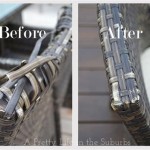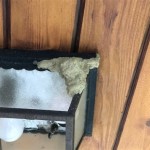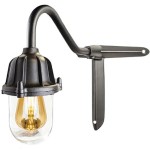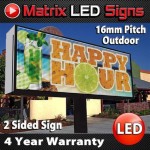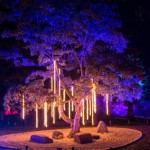Quality Outdoor Lighting Manufacturers: Illuminating the Landscape of Options
Outdoor lighting plays a crucial role in enhancing the functionality, security, and aesthetic appeal of residential, commercial, and public spaces. Choosing the right outdoor lighting fixtures requires careful consideration of various factors, including durability, energy efficiency, light output, design, and compliance with local regulations. The market is populated by a diverse range of manufacturers, each with their own strengths and specializations. This article provides an informative overview of key aspects to consider when evaluating quality outdoor lighting manufacturers and their offerings.
Factors Determining Quality in Outdoor Lighting Manufacturing
Several key factors contribute to the overall quality of outdoor lighting products. These factors encompass the materials used, the manufacturing processes employed, and the design considerations implemented to ensure long-term performance and reliability in challenging outdoor environments.
Material Selection: The material composition of outdoor lighting fixtures directly impacts their resistance to corrosion, weather damage, and physical wear. High-quality manufacturers prioritize the use of durable materials such as die-cast aluminum, stainless steel, brass, and high-impact polymers. These materials offer excellent resistance to rust, UV degradation, and extreme temperatures. Furthermore, the finish applied to the fixture is critical. Powder coating, for example, provides a robust and long-lasting protective layer, preventing paint chipping and discoloration over time. The optical components, such as lenses and reflectors, are typically made from tempered glass or UV-resistant polycarbonate to ensure optimal light transmission and protection from the elements.
Manufacturing Process: The manufacturing process employed by a lighting manufacturer significantly influences the precision, consistency, and overall quality of the final product. Manufacturers that utilize automated production lines and rigorous quality control measures are more likely to produce fixtures with tight tolerances, consistent performance, and minimal defects. Key manufacturing processes include die-casting, machining, welding, assembly, and finishing. Each of these processes must be carefully controlled to ensure that the final product meets the required specifications. Furthermore, reputable manufacturers often conduct thorough testing at various stages of the production process, including material testing, component testing, and finished product testing. This testing ensures that the fixtures meet the required performance standards for light output, efficacy, and lifespan.
Design and Engineering: The design and engineering of outdoor lighting fixtures play a crucial role in their functionality, efficiency, and aesthetic appeal. High-quality manufacturers invest in research and development to create innovative and efficient lighting solutions that meet the evolving needs of the market. Key design considerations include thermal management, optical performance, and ease of installation and maintenance. Effective thermal management is essential for ensuring the long lifespan of LED light sources. Efficient heat dissipation prevents overheating and degradation of the LED chips, thereby prolonging their operational life. Optical design focuses on optimizing light distribution and minimizing glare. Well-designed fixtures provide uniform illumination and enhance visual comfort. Furthermore, the design should facilitate easy installation and maintenance, allowing for quick replacement of components and simplified cleaning.
Key Performance Characteristics to Evaluate
Evaluating the performance characteristics of outdoor lighting fixtures is critical to ensure they meet the specific requirements of the application. Several key performance metrics should be considered when making a selection, including light output, efficacy, color temperature, color rendering index (CRI), and lifespan.
Light Output (Lumens): Light output, measured in lumens, indicates the total amount of light emitted by a fixture. The required light output will depend on the size and type of area being illuminated. For example, a walkway may require a lower light output than a parking lot. Manufacturers typically provide lumen output data for their fixtures, allowing users to compare the brightness of different models. It is important to choose a fixture with sufficient lumen output to adequately illuminate the intended area.
Efficacy (Lumens per Watt): Efficacy, measured in lumens per watt (lm/W), indicates the efficiency of a lighting fixture in converting electrical energy into light. Higher efficacy values indicate that the fixture produces more light for the same amount of energy consumed. High-efficacy fixtures are more energy-efficient and can significantly reduce electricity costs over the lifespan of the product. LED lighting fixtures typically offer significantly higher efficacy than traditional lighting technologies such as incandescent or halogen lamps.
Color Temperature (Kelvin): Color temperature, measured in Kelvin (K), describes the color appearance of the light emitted by a fixture. Lower color temperatures (e.g., 2700K-3000K) produce a warm, yellowish light, while higher color temperatures (e.g., 4000K-5000K) produce a cool, bluish-white light. The choice of color temperature depends on the desired ambiance and the specific application. Warm color temperatures are often preferred for residential settings, while cooler color temperatures are more commonly used in commercial and industrial applications.
Color Rendering Index (CRI): The Color Rendering Index (CRI) measures the ability of a light source to accurately render the colors of objects compared to a natural light source, such as sunlight. CRI values range from 0 to 100, with higher values indicating better color rendering. For applications where accurate color perception is important, such as retail displays or landscaping, it is important to choose a fixture with a high CRI value (e.g., CRI > 80).
Lifespan (Hours): The lifespan of a lighting fixture indicates the expected operating time before the light output degrades to a specified percentage of its initial value. LED lighting fixtures typically have a much longer lifespan than traditional lighting technologies. The lifespan of an LED fixture is typically expressed as L70 or L50, which indicates the number of hours until the light output decreases to 70% or 50% of its initial value, respectively. Longer lifespans reduce maintenance costs and replacement frequency.
Certifications and Standards for Outdoor Lighting
Adherence to relevant certifications and standards is a crucial indicator of a quality outdoor lighting manufacturer. These certifications ensure that the products meet specific safety, performance, and environmental requirements.
UL (Underwriters Laboratories): UL is a globally recognized safety certification organization that tests and certifies products for safety. UL certification indicates that a lighting fixture has been tested to meet specific safety standards and is safe for use. UL listing is a prerequisite for many outdoor lighting applications, particularly in North America.
DLC (DesignLights Consortium): DLC is a non-profit organization that promotes energy-efficient commercial lighting solutions. DLC listing indicates that a lighting fixture meets specific performance and energy efficiency requirements. DLC-listed fixtures are often eligible for utility rebates and incentives.
Energy Star: Energy Star is a joint program of the U.S. Environmental Protection Agency (EPA) and the U.S. Department of Energy (DOE) that promotes energy-efficient products and practices. Energy Star certification indicates that a lighting fixture meets specific energy efficiency standards. Energy Star-certified fixtures typically consume significantly less energy than standard fixtures.
IP Rating (Ingress Protection): The IP rating indicates the level of protection provided by a lighting fixture against the ingress of solid objects and water. The IP rating consists of two digits, with the first digit indicating protection against solid objects and the second digit indicating protection against water. For outdoor lighting applications, it is important to choose fixtures with an appropriate IP rating to ensure they can withstand the expected environmental conditions. For example, a fixture installed in a wet location should have an IP rating of IP65 or higher.
RoHS (Restriction of Hazardous Substances): RoHS is a European Union directive that restricts the use of certain hazardous substances in electrical and electronic equipment. RoHS compliance indicates that a lighting fixture does not contain restricted substances such as lead, mercury, cadmium, and hexavalent chromium.
In addition to these certifications, reputable manufacturers often adhere to industry standards such as IES (Illuminating Engineering Society) standards for lighting design and performance. These standards provide guidance on best practices for lighting design and ensure that lighting systems meet specific performance requirements.
In conclusion, selecting quality outdoor lighting manufacturers requires a thorough understanding of the factors that contribute to product quality, performance characteristics, and adherence to relevant certifications and standards. By carefully evaluating these factors, specifiers and end-users can choose lighting solutions that provide optimal performance, energy efficiency, and long-term reliability for their specific application needs.

Smart Outdoor Led Lighting Haven

Landscape Lighting Lightcraft Outdoor

For Outdoor Luminaires Great Quality Directly From The Manufacturer

These Are The 3 Best Outdoor Landscape Lighting Brands For Your Home

Led Lighting Manufacturer Dauer Manufacturing

The 3 Best Smart Outdoor Lights For Backyards Of 2024 Reviews By Wirecutter

Brand Quality Outdoor Lighting Directly From The Manufacturer

Outdoor Lighting Archives Merkley Supply Ltd

Outdoor Lighting Perspectives Residential Company

Seawater Resistant Outdoor Luminaires Directly From The Manufacturer Paulmann Licht
Related Posts

